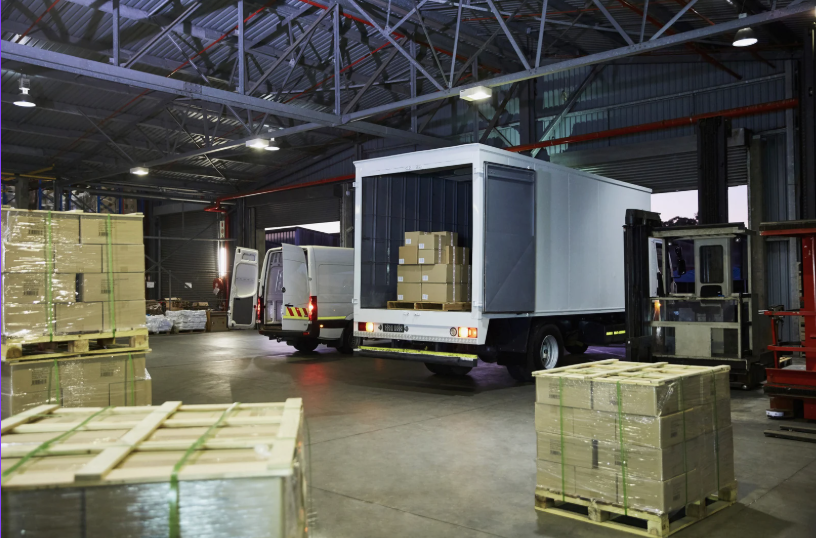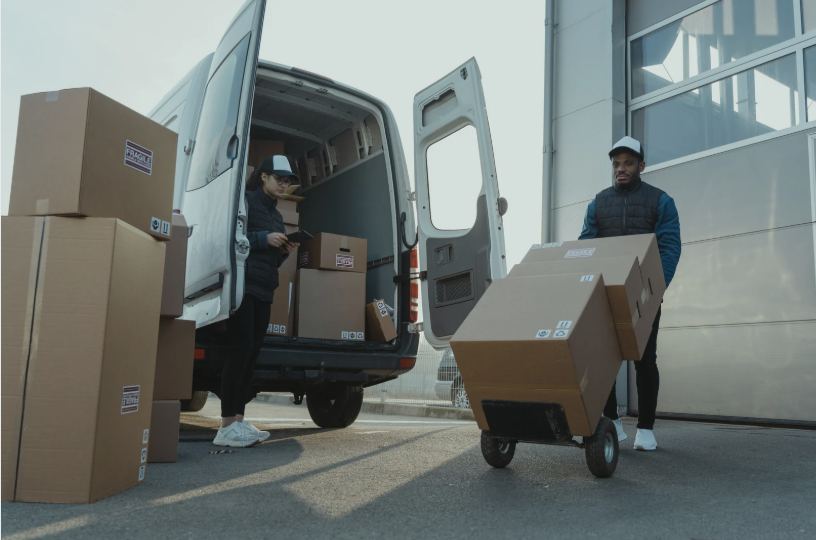Warehouse & Logistics Security Systems in Ontario, CA
Protect inventory, secure loading docks, and monitor large facilities with integrated security cameras, perimeter access control, and network infrastructure designed for warehouses and logistics centers in Southern California.
Security Challenges Facing Warehouses and Logistics Centers
Warehouses and logistics facilities face constant security threats—from cargo theft and loading dock shrinkage to trailer break-ins and unauthorized vehicle access. Large facilities with outdoor storage yards, blind spots, and 24/7 operations create vulnerabilities that traditional security can't address. End-Point Wireless delivers integrated security camera systems with license plate recognition, perimeter access control, vehicle gate automation, and scalable network infrastructure that protect inventory, reduce shrinkage, and maintain operational efficiency across your entire facility.
Cargo theft costs California logistics companies over $500 million annually, with organized theft rings targeting trailers, high-value inventory, and outdoor storage. We install perimeter cameras with night vision at fence lines, gate entrances, and trailer yards that detect unauthorized activity 24/7. License plate recognition (LPR) cameras capture every vehicle entering and exiting, creating searchable records by plate, date, or time. Motion-triggered alerts notify security teams instantly when someone approaches trailers or storage areas after hours. Visible cameras with red LED rings create visual deterrence that discourages thieves before attempts occur. Integrated alarm systems can trigger alerts when trailer doors open unexpectedly, providing immediate response before cargo is removed.
Loading docks are high-risk areas for internal theft, inventory discrepancies, and process violations that create shrinkage. We install high-resolution cameras with wide-angle lenses that cover entire loading bay areas, capturing dock doors, trailer interiors, and staging areas simultaneously. Time-stamped footage syncs with warehouse management systems, allowing managers to verify shipments against paperwork and identify discrepancies. Motion analytics detect unusual activity like after-hours dock door openings or employees lingering near high-value items. Cloud storage provides evidence for investigating missing inventory, employee theft, or carrier disputes. Many warehouses see 20-30% reductions in shrinkage within months after installing comprehensive loading dock camera coverage.
Absolutely. Vehicle access control systems use license plate recognition (LPR) at entry gates to automatically identify authorized vehicles and deny unknown plates. Pre-registered trucks and employee vehicles trigger automatic gate opening while unknown vehicles require manual approval from security. The system logs every vehicle entry and exit with plate number, timestamp, and photo evidence—creating audit trails for security and compliance. Integration with visitor management allows carriers to pre-register delivery appointments, speeding check-in and reducing gate congestion. Temporary access codes grant one-time entry for contractors or vendors without permanent credentials. This approach prevents unauthorized vehicles while maintaining efficient traffic flow for authorized deliveries and shipments.
Large logistics campuses require strategic camera placement that covers critical areas without blind spots. We conduct site surveys to identify vulnerability points: perimeter fences, vehicle gates, building entrances, loading docks, trailer yards, and outdoor storage. High-resolution cameras with optical zoom monitor distant areas like far fence lines or back lots without requiring expensive additional cabling. PTZ (pan-tilt-zoom) cameras provide 360-degree coverage of large open areas, allowing operators to track activity in real-time or zoom in for detail. Wireless bridge connections link outlying buildings or storage yards to the main network without trenching fiber across the property. Cloud management consolidates all cameras into a single dashboard, allowing security teams to view the entire campus from one screen.
Modern IP-based security systems require robust network infrastructure that delivers power and data reliably across large facilities. We design networks with Power over Ethernet (PoE) switches that power cameras and access control readers without separate electrical runs, reducing installation costs and improving reliability. Fiber optic backbones connect buildings up to several miles apart, while Cat6 cabling distributes connections to cameras and readers throughout each structure. VLANs isolate security traffic from warehouse operations, ensuring cameras and access control maintain priority even during peak usage. Redundant network paths and uninterruptible power supplies (UPS) keep security systems online during power outages or equipment failures. We also implement Quality of Service (QoS) rules that guarantee security camera bandwidth regardless of other network activity, preventing lost footage during critical events.
Service Features
Monitor Cargo, Trailers, and Outdoor Storage 24/7

Control Who Enters and Track Every Vehicle Automatically

Reliable, Scalable Networks That Support Security and Operations

WHAT HAPPENS WHEN YOU CALL
Our proven installation process ensures your security system is properly configured and fully operational.
INITIAL CONSULTATION
We assess your security needs and provide a detailed proposal with recommendations.
SYSTEM DESIGN
Our engineers create a custom security system design tailored to your facility.
PROFESSIONAL INSTALLATION
Certified technicians install and configure all security equipment to specifications.
TESTING & TRAINING
Complete system testing and staff training to ensure optimal security performance.
Frequently Asked Questions
Most warehouse security installations can be completed in 2-4 weeks depending on facility size and complexity, with work scheduled to minimize operational disruption. Small warehouses (under 100,000 sq ft) with basic camera coverage and gate access typically take 1-2 weeks. Mid-sized facilities (100,000-300,000 sq ft) with comprehensive coverage, loading dock cameras, and access control usually require 2-3 weeks. Large distribution centers (300,000+ sq ft) with multiple buildings, extensive outdoor areas, and integrated systems can take 4-6 weeks. We schedule installation during off-peak hours or weekends to avoid interfering with shipping and receiving operations. Network infrastructure installation—cabling, switches, and fiber—happens first, followed by camera and access control mounting and configuration.
Yes. Modern security systems can integrate with most warehouse management platforms to correlate video footage with operational data. Camera timestamps sync with WMS transaction logs, allowing managers to review video of specific shipments, pick events, or inventory movements. License plate recognition integrates with carrier management systems to automatically verify inbound trucks against scheduled appointments. Access control systems export entry/exit logs that sync with labor management platforms to verify employee attendance and time tracking. While integration depth varies by platform, most systems support API connections, database queries, or scheduled data exports. We work with your IT team and WMS vendor to design integrations that enhance security without disrupting warehouse operations.
Our systems include multiple safeguards against camera tampering or damage. Cameras include tamper detection sensors that trigger alerts when someone blocks lenses, cuts cables, or physically moves cameras. Cloud recording with onboard storage ensures footage is saved even if network connectivity is lost, automatically syncing once restored. Redundant camera coverage means multiple cameras view critical areas from different angles, so disabling one camera doesn't eliminate coverage. Vandal-resistant housings and high-mounted installations make cameras difficult to reach or damage without equipment. For extreme environments, we deploy armored housings with polycarbonate shields that resist impacts and spray paint. Real-time health monitoring alerts if cameras go offline, allowing rapid response to restore coverage before incidents occur.
Yes. Our systems include multiple layers of backup to maintain security during outages. Access control panels have 8-12 hours of battery backup that keeps doors functioning during power loss, ensuring facility security and employee egress. Security cameras with onboard storage continue recording when internet fails, automatically syncing footage to the cloud once connectivity restores. Critical network equipment includes uninterruptible power supplies (UPS) that provide 30-60 minutes of runtime during brief outages, enough for generators to activate. Cellular failover connections maintain remote access and monitoring even if primary internet fails. For facilities requiring 24/7 uptime, we deploy backup generators and redundant internet connections that automatically switch over during failures, ensuring zero downtime for security systems.
Costs vary based on facility size, coverage requirements, and features. A small warehouse (under 100,000 sq ft) with basic camera coverage, gate access control, and license plate recognition starts around $40,000-$75,000. Mid-sized facilities (100,000-300,000 sq ft) with comprehensive camera coverage, loading dock monitoring, and perimeter access control typically range from $100,000-$200,000. Large distribution centers (300,000+ sq ft) with multiple buildings, extensive outdoor areas, and advanced integrations can exceed $500,000. Monthly cloud storage and support fees range from $500-$5,000 depending on camera count and retention periods. Most warehouses find per-square-foot costs of $0.50-$1.50 for comprehensive security that reduces shrinkage, lowers insurance premiums, and protects high-value inventory—often achieving ROI within 1-2 years through theft prevention alone.
SERVICE COVERAGE AREA
We provide security system installation throughout Southern California and surrounding areas.
Blogs

Essential Security Camera Placement: Best Practices for Maximum Coverage
Learn the strategic positioning techniques that security professionals use to ensure comprehensive surveillance coverage while maintaining privacy compliance.
READ MORE »
5 Common Access Control Mistakes and How to Avoid Them
Discover the most frequent access control implementation errors that compromise security and learn proven strategies to prevent them in your facility.
READ MORE »
Why Smart Integration is the Future of Commercial Security
Explore how integrated security systems are revolutionizing commercial protection by connecting cameras, access control, and alarm systems into unified solutions.
READ MORE »